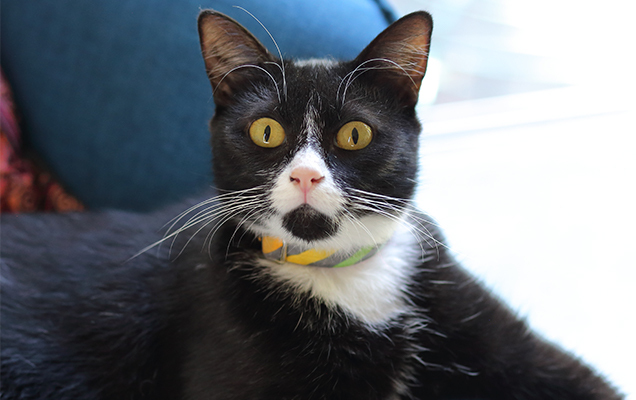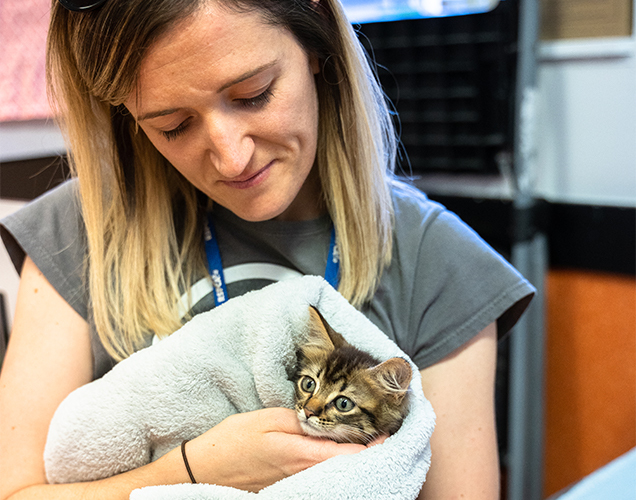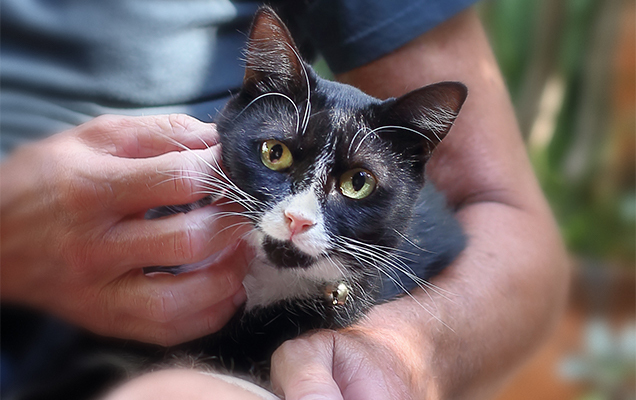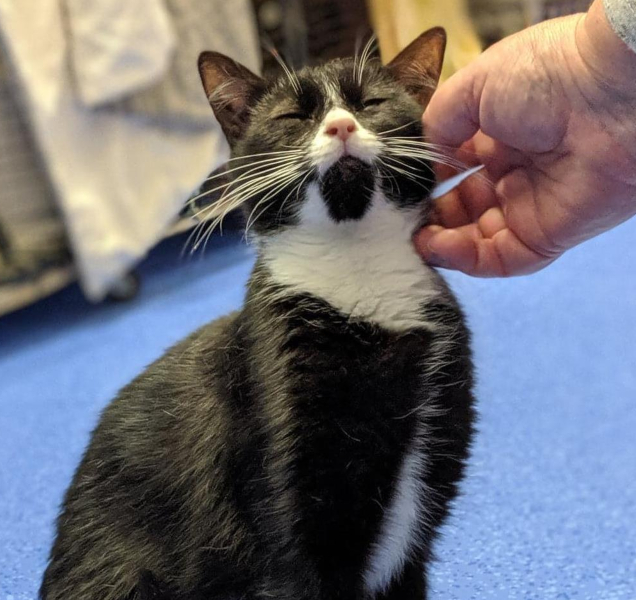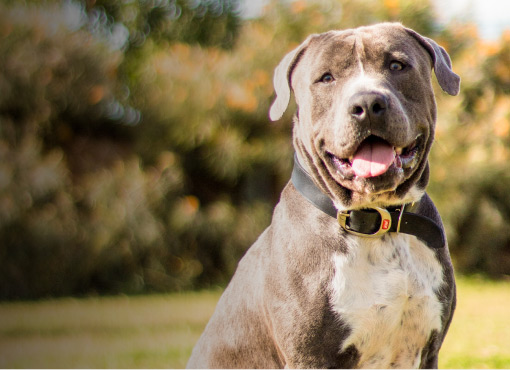Mercury is a happy and contented kitty who enjoys head pats, chin rubs and the occasional back scratch. She loves to whizz around the house, ‘chats’ with her distinctive meow, and her new adoptive family of Helen and Rod say that their bed and a comfy sofa are two of Mercury’s favourite snoozing spots. Nevertheless, just a few months ago this black and white fur bundle was a vastly different cat.
Wandering the streets frightened and anxious, Mercury was found and brought to an RSPCA Animal Care Centre. When rescued, Mercury was hissing, growling and withdrawn: expected signs of non-social behaviour. Historically, an under-socialised and fractious cat would have been considered beyond rehabilitation.
But, a cat rehabilitation program introduced into the RSPCA several years ago has transformed these scaredy cats into first-class companions.


